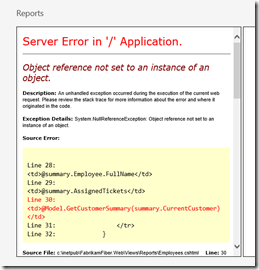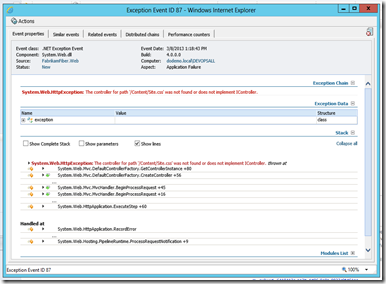When we create an Operational Issue, an IntelliTrace log is attached to the work item itself:

but it features just the minimum subset of information related to the alert.
The first way would be manually get a .iTrace file with our custom collector. Nothing that difficult, but if the main motto of DevOps is “automate everything”, we are going against it.
Or – way better – I can ask the Ops folks to record a detailed IntelliTrace log, of course everything integrated with Team Foundation Server. It’s just needed to set the work item to “awaiting evidence” with a resolution note telling them to provide me a better IntelliTrace log:

Then the Ops guy is going to use the IntelliTrace Tasks tab to gather what Engineering wants. Definitely easy!

He can collect a snapshot of the current state of the involved application pool, or better he can start collecting a new IntelliTrace file, replicating/let someone replicate the scenario on behalf of the user, and then the new IntelliTrace file is going to be attached to the related Work Item.
All the IntelliTrace files are going to be stored into a network share, one folder for each alert, so remember to keep an eye on the storage size!








